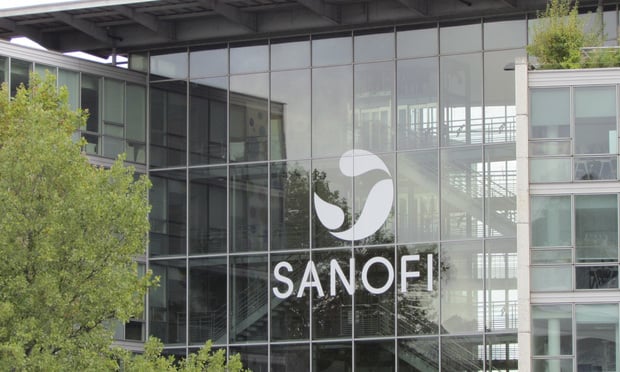 Instead of trying to identifythe perfect perk, shift your focus to bringing the company'sculture and mission to life in an authentic way. (Photo:Shutterstock)
Instead of trying to identifythe perfect perk, shift your focus to bringing the company'sculture and mission to life in an authentic way. (Photo:Shutterstock)
A recent poll from Gallup connected employee engagement to workplace benefits—andit's time for your team to get on board. To get started, there arethree benefits that HR teams should address to improve companyculture in the new year: perks, financial resources and well-being.Fortunately, “rethinking” these employee benefits don't always meanspending more, just thinkingdifferently.
|1. Accept that perks are superficial.
Examine the budget for those big, expensive holiday parties. How could that money be betterdistributed? The ROI on a holiday party is merely a short-termboost in engagement. Instead of trying to identify the perfectperk, shift your focus to bringing the company's culture and mission to life in anauthentic way.
|You can start by examining the collective values, norms andbeliefs of the organization. This is the backdrop for everythingthat happens at your company and the day-to-day experience. Thenask yourself, do employees feel valued? Do we give honest feedback?Do leaders always “win” the conversation? Is the organizationluxurious and elaborate, or frugal and modest? Is it fast-paced andrisk-taking or methodical and calculated? Creating an intentionalenvironment where employees feel cared for will deliver anexponentially higher impact than surface-level perks will.
|2. Personalize your financial well-being resources.
Offering a 401(k) is great, but might feel overwhelming to anemployee who's trying to find money for groceries. More employers are offering retirementbenefits, but exclude other factors, like credit score monitoring,financial literacy and structured programs tailored for theindividual.
|Going with a personalized approach to finance works. Forexample, 94 percent of employees who used the Limeade financialwell-being solutions improved their average financial well-beingscore. Nothing is more rewarding than seeing someone go from livingpaycheck to paycheck to purchasing his or herfirst home—all because the employer offered a personalizedfinancial improvement program that guided him or her on astep-by-step journey.
|3. Take a whole-person approach to well-being.
Employers spend thousands on gym memberships (and there'snothing wrong with that), but what about helping employeesmanage stress during the busy season, orproviding work-life balance support when someone returns frommaternity leave? Much like the comprehensive financial guidanceprograms, providing a suite of whole-person benefits can spark aninternal drive. And the most important benefits are the human ones—managers who care, employee resource groups that connect andinspire, leaders who show up as real and authentic.
|This approach has a real business impact. In 2013, WashingtonState Governor Jay Inslee launched a whole-person well-being program that he later credited to improvedjob satisfaction. Recent data reveals a 25 percent reduction inemployee turnover, a 37 percent reduction in overtime and 10percent fewer sick days taken. And the state Department ofCorrections reported a positive impact on people in jail asofficers improved their overall well-being and performance atwork.
|In lieu of a potentially pricier health plan, consider theeffects of time off. A 2015 survey revealed what thousands ofemployees thought would boost their “emotional health.” The resultsmatched up with a report from the American Medical Association,which stated 60 percent of illnesses are caused by stress, costingbusinesses a hundred billion dollars annually.
|Consider a day-time break program, where employees can meditate,take a walk or recharge, without rebuke. For our busiest employees,our technology can auto-schedule breaks into their daily Outlookcalendars.
|Lastly, It's crucial for employers to show they authenticallycare and want their people to use the benefits available to them.Set the tone by having your CEO send a company-wide email or videothat states he or she is invested in the whole-person well-being,where they can also share their personal well-being story. Remindemployees of your company's mission (the “why” behind the work).Integrating purpose and values into every interaction sets apositive tone, demonstrates care and builds trust—all key driversof real employee engagement.
Read more:
- 4 tactics to ramp up employee engagement in2019
- Addressing the millennial engagementepidemic
- How to retain good employees? Make them feelvalued.
Henry Albrecht is CEO and co-founder ofLimeade, anemployee experience company.
Complete your profile to continue reading and get FREE access to BenefitsPRO, part of your ALM digital membership.
Your access to unlimited BenefitsPRO content isn’t changing.
Once you are an ALM digital member, you’ll receive:
- Critical BenefitsPRO information including cutting edge post-reform success strategies, access to educational webcasts and videos, resources from industry leaders, and informative Newsletters.
- Exclusive discounts on ALM, BenefitsPRO magazine and BenefitsPRO.com events
- Access to other award-winning ALM websites including ThinkAdvisor.com and Law.com
Already have an account? Sign In
© 2024 ALM Global, LLC, All Rights Reserved. Request academic re-use from www.copyright.com. All other uses, submit a request to [email protected]. For more information visit Asset & Logo Licensing.








